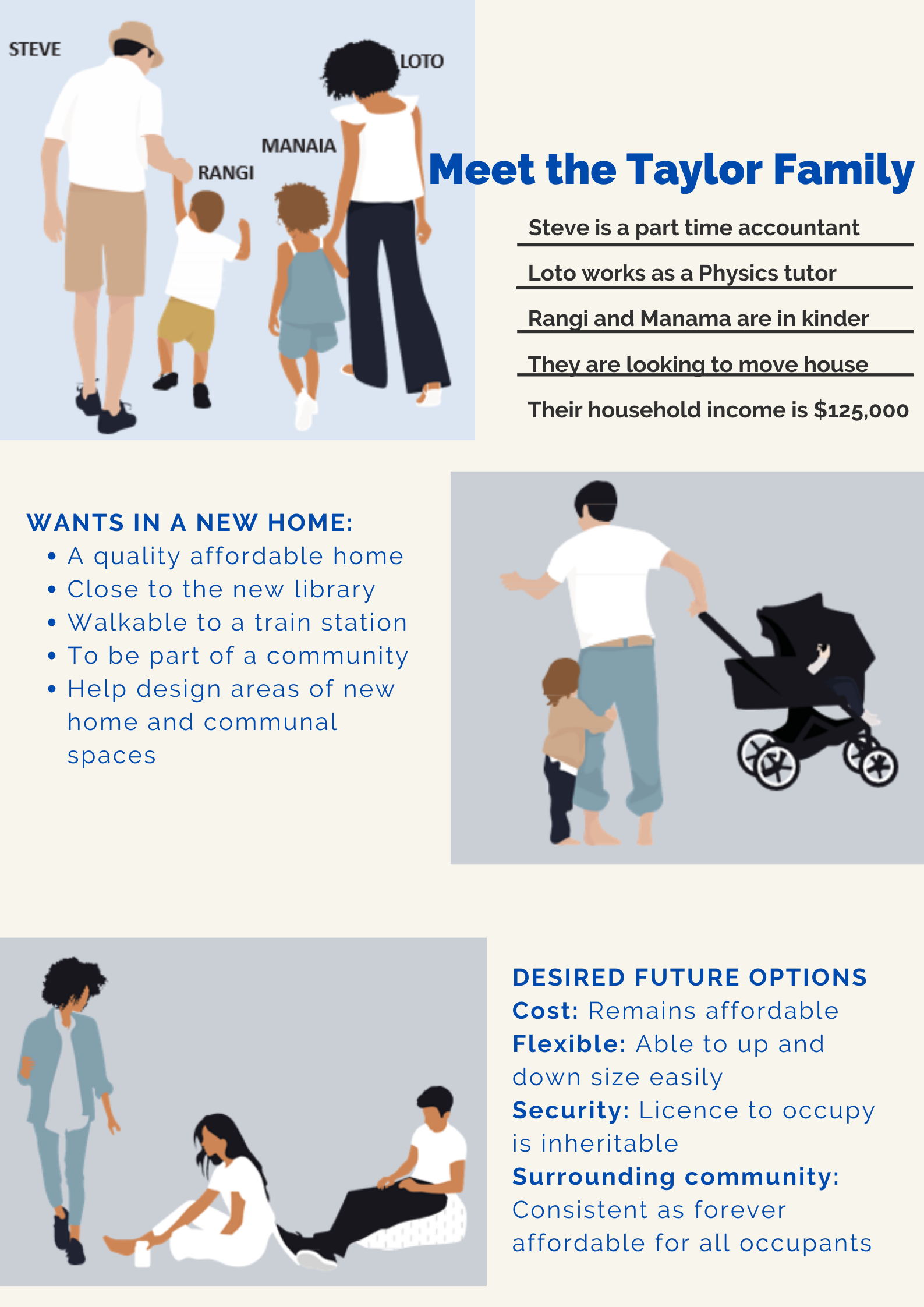More spice, less vanilla housing options, please.
Lets get more flavours and spice into the Aotearoa NZ housing ecosystem. Photo by Ratul Ghosh on Unsplash
A housing case study demonstrates forever affordability and more housing flavour potential for Auckland
Are you, or someone you care about, an example of generation rent? Would you/ they love a healthy home free from rental eviction? Living options can be very vanilla for those who might identify as economically trapped, as working poor, or even just a low income worker.
Maybe you experienced living differently internationally? Then came back to Aotearoa, New Zealand wishing you could find the same spicy living options here? That is definitely my position.
Knowing what could be for many other kiwis, is why I want to share and promote some recent amazing and relevant mahi. I had the privilege to work with some super-smart people (led by Greer from The Urban Advisory). It highlighted what could be new cool housing flavours. This mahi considered how we could have stable and permanently affordable home options. These ‘new to New Zealand’ housing flavours are common and decades-old in many other parts of the world. The mahi explored how to bring more flavours to what some call the ‘housing system.’ A better term is ‘housing ecosystem.’
The report produced by the consultancy team. Photo by Imogen Schoots
Some relevant terms
Let's start with a few terms. Collective housing refers to housing models that are not profit-driven. It is housing delivered and/or managed in partnership by resident communities. Such models can share resources like common areas. They are also intentionally designed so those that live there frequently bump into neighbours. Commonly they are more affordable than market housing. They are “models, not products, as defined by the set of legal, financial, governance, management, and design parameters that shape them” (The Urban Advisory, 2020).
Many people want to solve their own housing needs. These people may have a relevant skill set. When these people get together and collaborate, amazing developments are possible.
The definitions section below has more details about individual collective housing models.
The ‘intermediate housing market' is the term housing policy folk use to describe the working poor. It also describes the economically trapped. These private sector renter households have at least one member in paid employment. They are unable to affordably (at no more than 30% of their pre-tax household income) buy a dwelling at the lower quarter housing market sale price.
The Mahi in summary
The project began in late 2019, by Eke Panuku Development Auckland. It was internally led by the then Project Manager, Imogen Schoots. Its main aim was to find out the best way to achieve ongoing affordability in housing.
The Urban Advisory (Greer O’Donnell) steered the consultant-led analysis. A Council owned site in a middle ring Auckland suburb was chosen for a desktop assessment. The built forms considered were a 10-story tower or a 3-story walk-up development. Collective housing models that best aligned with the project's aim were considered. A detailed analysis report was prepared by the consultant team. The desktop analysis included a user demand analysis, site assessment, design and financial feasibility. The project and associated documents were completed in June 2020. Eke Panuku can make this available upon request.
A form of a ‘forever affordable home’ experienced by the author. This is as a housing cooperative in inner west Sydney. Photo courtesy of Jo Allan.
The consultancy team
Greer O’Donnell – Consultancy team lead, The Urban Advisory
Martin Cooper – Development feasibility, Copper & Associates
Jimmi O’Toole – Design, AHHA
Jason Twill – Sustainable development strategy, Urban Apostles
Ben Preston –Regenerative design
Case study aims
Summary of project aims:
Quality and ongoing affordability.
Act as a development catalyst. Appeal to and attract a new demographic of occupants. Amplify interest from new development and funding partners.
Show leadership through testing a new model. One built on a proven model but tailored to Auckland and NZ.
Be scaled and replicated.
Occupant wellbeing outcomes. These include increased belonging, connectedness and avoidance of stress etc from frequent moving.
The recommended model delivers all the project aims.
Achieving ongoing affordability is a key gap in the housing development market. Some models are easier to deliver and closer to market housing. Particularly those models with established legal and financial structures. This includes Melbourne’s "Nightingale" architect-led development model. The “Nightingale” model can provide a range of community benefits. It can deliver some of the project aims. Affordability in this model is not paid forward to future purchasers.
The Forever Affordable solution
To best achieve ongoing affordability, the land transfers to a Community Land Trust (with ground rent payable). The building is owned by a co-operative (as a limited profit company where all occupants are shareholders). The recommended option (of the five that were considered) is a 10-story apartment tower. It consists of 53 units of five typologies on 948m2.
Occupants buy shares of the building as a form of co-ownership. As the infographic shows, ‘rents’ get cheaper over time. These weekly occupant payments include all operational costs, including body corporate. Occupants are in effect co-owners.
A Trust Deed gives Council a varied form of ownership. Council leases the land to the CLT, and collects a predetermined amount of ground rent. The level of rent payable also takes into account the social benefit of the development.
Forever affordability is achieved through the legal and financial structures. The mix of both a co-operative and a community land trusts achieves the best financial outcome for the occupant. The ‘hybrid' also gives the greatest involvement for the occupant.
Who is this housing for?
Aotearoa New Zealand’s current housing system is not providing enough affordable, secure or suitable housing options for our diverse communities.
In Auckland, the number of economically trapped working poor is growing. Pre-covid research predicted that the number of this group would make up to around 18% of the Tamaki Makaurau’s households by 2028. These people are most concentrated in Auckland’s CBD and surrounding suburbs and between 30-39 years.
Real family application
Young families are typically the most common of the ‘working poor’ in the case study area. The case study was adapted to apply directly to a potential young family situation. The case study considered housing costs for an example family. The forever affordable development was directly compared to a private market offering. Market rates from 2020 were used.
Image above adapts images created by Eke Panuku, 2020.
What's the financials?
The scale of development proposed ensured the financial feasibility stacked up. It gives financial return certainty for investors. Those taking an earlier investment, the impact investors, are rewarded with a higher return (7% in the case study). The senior bank debt comes in later at a lower interest repayment rate (here it was 3.3%). The building is owned through a co-operative. The occupants are shareholders who make an initial contribution. Over time they earn a dividend of 2% p/a as per the case study model.
* Occupants become a member of the co-operative. Their buy in share earns a dividend return.
Case study status
The case study analysis was completed just as Covid was making an impact in mid-2020. As such Council budgets were under review. Then, only projects which had obtained resource consent were progressed. Also, the project required a partnership with the government for successful delivery. This was not considered a viable option at the time.
Forever Affordable Homes are progressing a variation of the case study with new partners. Smaller sized and lower cost developments are being considered. Two sites are currently under investigation. To find out more about how your organisation could be involved, get in touch via kiaora@foreveraffordablehomes.co.nz
Are you interested in a forever affordable home?
As indicated two sites are currently under investigation for possible cool new flavoured housing projects.
Please do get in touch if you are interested and would like to find out more. Detailing your preferred location and current living situation will greatly assist. We can be reached via kiaora@foreveraffordablehomes.co.nz
Definitions
Collective housing: May also be referred to as community-focused or community-led. Includes Papakāinga as led by occupants and includes shared amenities and spaces.
Community land trusts: are private non-profit organisations holding title to property/ies in perpetuity. They serve the community and individual needs at the same time. The Trust provides stewardship and protection of land from being disposed to the market. A CLT Board is typically made up of current or future occupants, members of the community, and representatives of various public entities/organisations.
Co-operatives: Involves residents owning shares in a company that owns an individual building. The ownership structure enables a reduced deposit/shareholder buy-in amount for its members. Member pooling enables efficiencies of scale and provides opportunities for participation in governance. This model can deliver perpetual affordability.
Co-housing: Resident/architect-led where occupants own 1 unit and a shared interest in common space. The development is self-governed by residents. The initial purchase may be affordable but that is not retained for subsequent owners.
Papakāinga: A homegrown kiwi version of collective living/housing for Maori people on their ancestral land. FAH understands papakāinga enables Māori community development. Sustaining cultural identity through traditions connected to ancestral lands.
Nightingale housing development: Architect led development originating in Melbourne. Designed for shared amenities and intentional meeting/ lingering areas. They are commonly medium density (around 8 stories). They are individually owned. The initial price may be affordable, although this is not retained for future buyers. It is understood their waiting list is more than 1,000.






